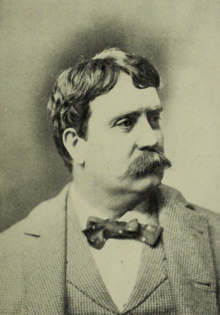Daniel Burnham | |
|---|---|
 Burnham in 1899 | |
| Born | Daniel Hudson Burnham September 4, 1846 |
| Died | June 1, 1912 (aged 65) |
| Occupation | Architect |
| Practice | Burnham and Root D. H. Burnham & Company |
| Buildings | Reliance Building, Flatiron Building, Washington Union Station, Ellicott Square Building |
| Projects | Plan of Chicago World's Columbian Exposition |
Daniel Hudson Burnham FAIA (September 4, 1846 – June 1, 1912) was an American architect and urban designer. A proponent of the Beaux-Arts movement, he may have been "the most successful power broker the American architectural profession has ever produced."[1]
A successful Chicago architect, he was selected as Director of Works for the 1892–93 World's Columbian Exposition, colloquially referred to as "The White City". He had prominent roles in the creation of master plans for the development of a number of cities, including the Plan of Chicago, and plans for Manila, Baguio and downtown Washington, D.C. He also designed several famous buildings, including a number of notable skyscrapers in Chicago, the Flatiron Building of triangular shape in New York City,[2] Washington Union Station in Washington D.C., London's Selfridges department store, and San Francisco's Merchants Exchange.
Although best known for his skyscrapers, city planning, and for the White City, almost one third of Burnham's total output – 14.7 million square feet (1.37 million square metres) – consisted of buildings for shopping.[3]
- ^ Goldberger, Paul (March 2, 2009). "Toddlin' Town". The New Yorker (published March 9, 2009). Retrieved May 2, 2020.
- ^ Laurin, Dale (2008). "Grace and Seriousness in the Flatiron Building and Ourselves" (PDF). Aesthetic Realism Looks at NYC. Aesthetic Realism Foundation. pp. 1–4. Archived (PDF) from the original on October 9, 2022.
- ^ Graham, Wade (2016) Dream Cities: Seven Urban Ideas That Shape the World New York: Harper Perennial. p.207 ISBN 978-0-06-219632-3